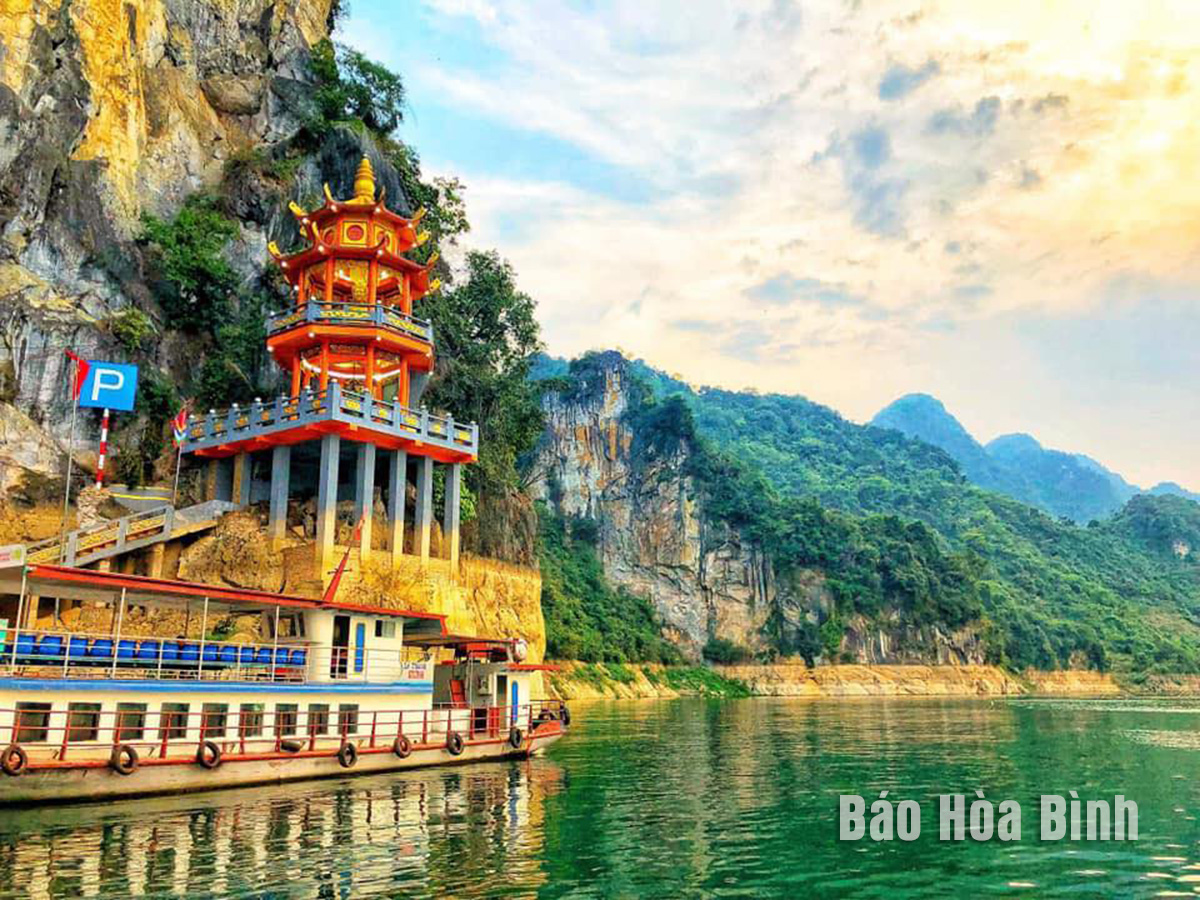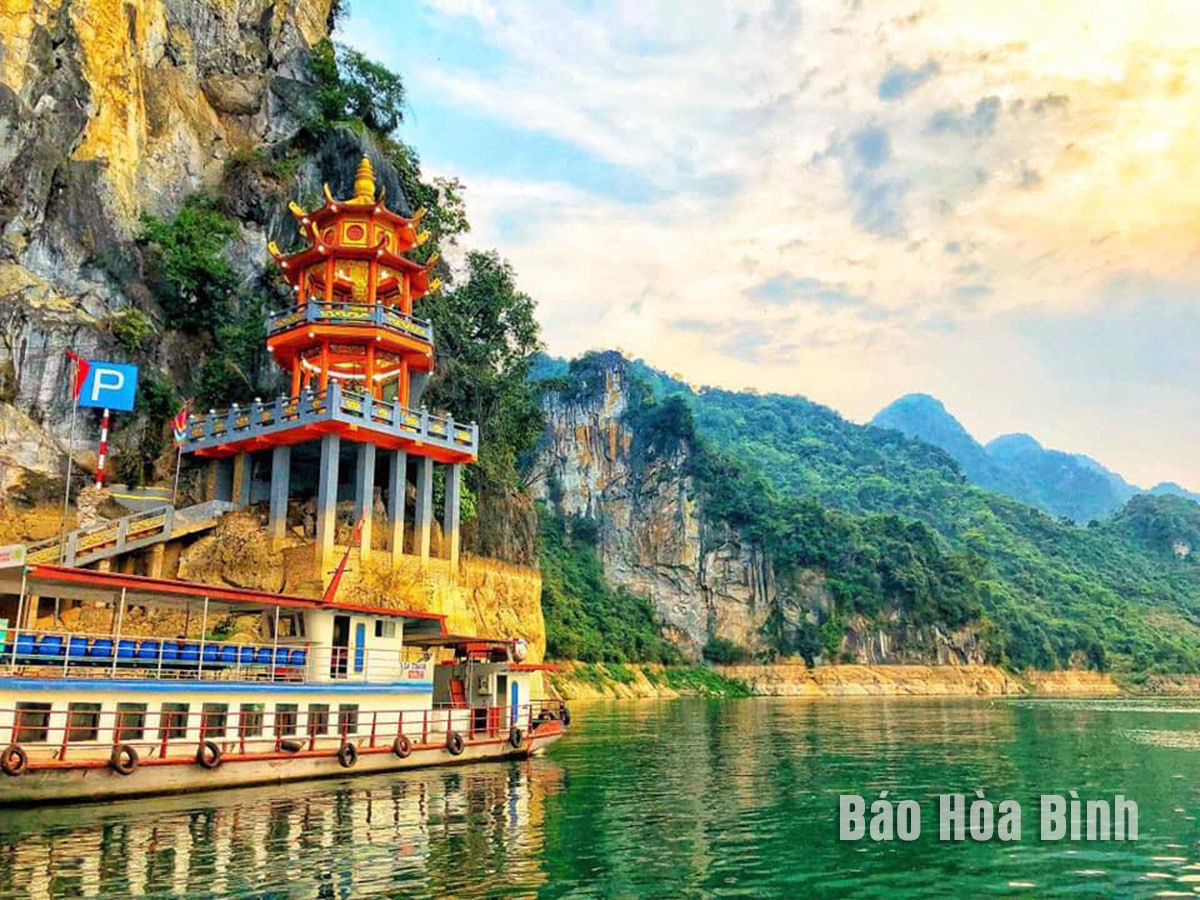
Boasting diverse terrain, a mild climate, and rich natural resources, Cao Phong district is increasingly asserting its place on Vietnam’s tourism map, attracting both domestic and foreign visitors. The district is renowned for its stunning landscapes, majestic mountains, a crystal-clear hydropower lake, and the unique cultural identity of local ethnic groups.

A prominent spiritual site in the area, Chua Thac Bo Temple in Thung Nai
commune attracts a large number of pilgrims and tourists.
As one
of the four ancient Muong regions in Hoa Binh province, Cao Phong has
prioritised raising public awareness of tourism’s importance to socio-economic
development. Local authorities have worked to position tourism as a spearhead
economic sector, while focusing on infrastructure upgrade, investment
attraction, and the development of tourism products that meet visitors' demand.
According
to local authorities, six tourism-related projects have been approved in Cao
Phong district, with a combined investment of over 789 billion VND (30.5
million USD). These include eco-resorts, cultural and wellness centres, and a
heritage conservation site. Notable developments are the Binh Thanh Ecotourism
Resort, Thung Nai Peninsula Resort, and the Parahills Hoa Binh tourism complex.
A high-tech agricultural project with tourism potential is also under review.
To
boost tourism, Cao Phong district has been upgrading roads, expanding the power
grid, and enlarging the mobile and internet coverage, including 4G at key
tourism sites.
At the
same time, it is stepping up tourism promotion efforts through partnerships
with national and local media agencies.
Notably,
Vietnam Television and Laser-Ad Communications have featured the district in
travel programmes, while authorities produce videos and brochures to showcase
local attractions.
To
make tourism a key economic driver, Cao Phong is pushing ahead with several
measures such as raising public awareness of tourism and boosting
infrastructure investment. Plans are also underway to develop ecotourism
resorts, cultural heritage sites, and diverse tourism offerings across the
district.
A diverse chain of eco-tourism and resort destinations concentrated in Hoa Binh city and the districts of Tan Lac, Da Bac, and Luong Son… Along with the launch of several key high-quality resort tourism projects, these developments have reshaped the landscape and enhanced the appeal of Hoa Binh as a travel destination.
With its pristine landscapes, unique cultural heritage of Muong ethnic minority, and an expanding range of visitor experiences, Tan Lac district of Hoa Binh has fast become a captivating destination for both domestic and international tourists.
Until now, Sung village in Cao Son commune, Da Bac district remains the only Dao ethnic community in Hoa Binh province to develop a community-based tourism model. Beyond its untouched natural landscapes, cultural identity serves as the cornerstone attraction for visitors.
Alongside the diverse cultural identities of the Kinh, Muong, Tay, Thai, Dao, and Mong ethnic people, Hoa Binh province is also renowned as the "capital" of the northwestern Vietnamese cuisine, offering unique and distinctive dishes. At festivals, during Lunar New Year (Tet), or on significant family or community occasions, special dishes are prepared, leaving a lasting impression on visitors.
A Phong Linh (Yellow Tabebuia) flower garden in Thang village, Thach Yen commune, Cao Phong district is currently in full bloom, drawing a large number of visitors.
Community-based tourism has been thriving in Pa Co commune, Mai Chau district thanks to advantages in natural landscape and cultural identity.



